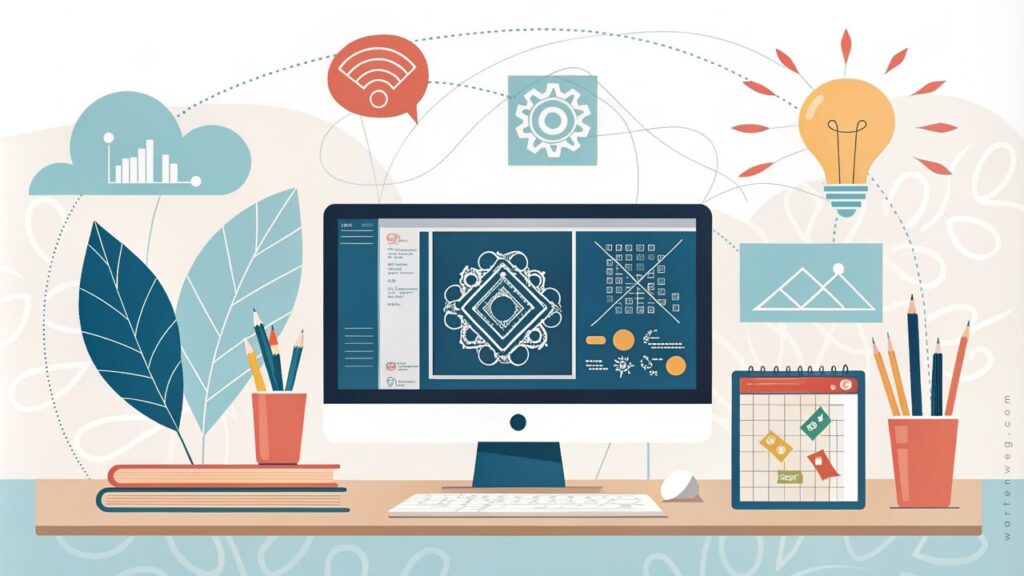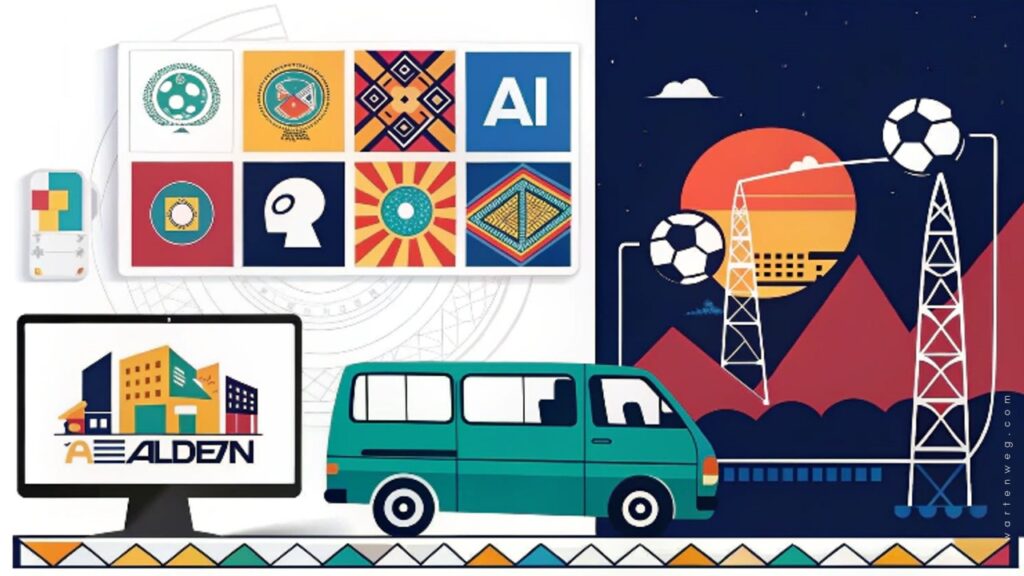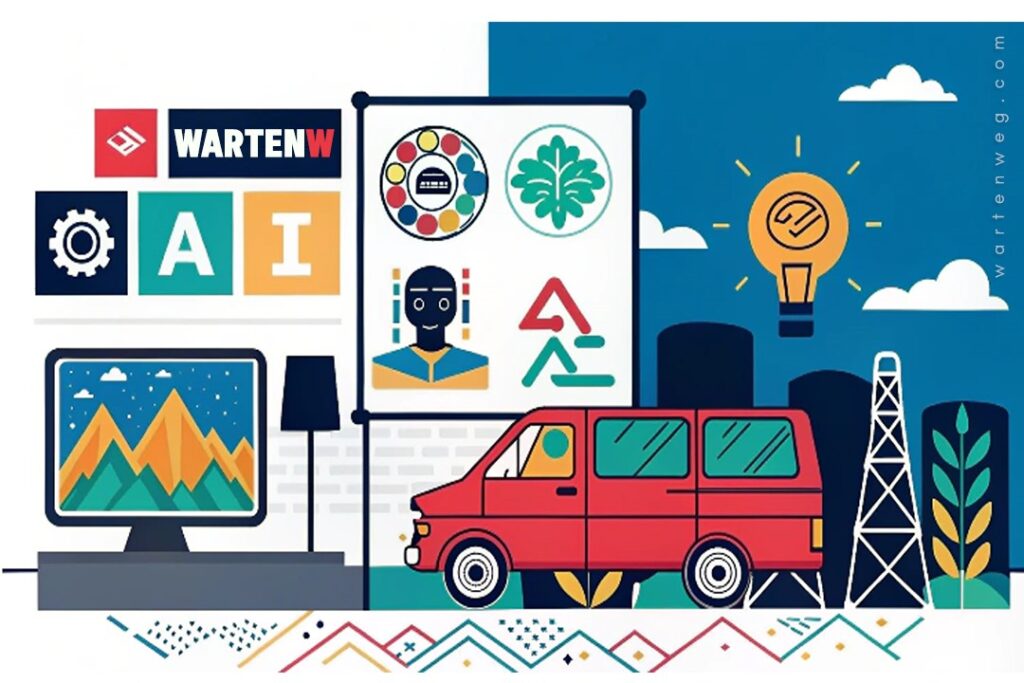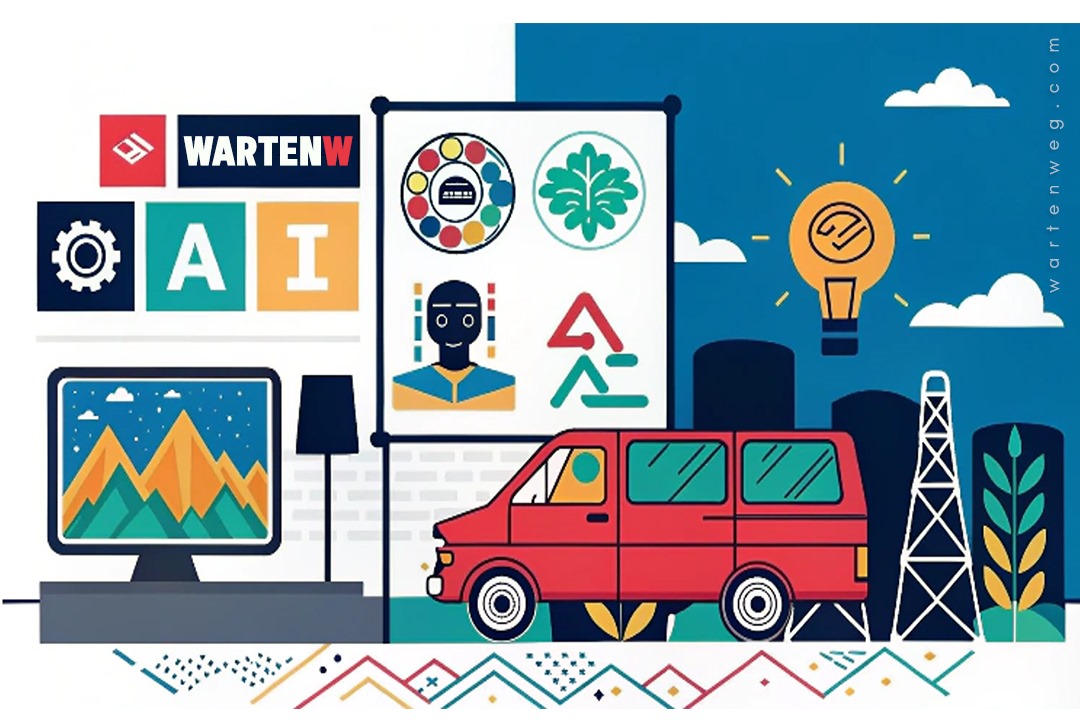Artificial Intelligence in Graphic Design: Reshaping Creativity in the Digital Age, Mzansi Style!
Ayeee, what’s good design fam! Let me share some important insights. Artificial intelligence in graphic design is revolutionising the game. Trust me, this isn’t your ordinary tech talk. We’re diving deep into how AI is changing the creative hustle, Durban style!
Table of Contents
The Tech Revolution in Our Creative Streets
Imagine walking down the vibrant streets of Durban. Creativity flows like the warm Indian Ocean waves. Now we’ve got this crazy powerful technology called AI. It’s about to flip our design world upside down. Artificial Intelligence isn’t just some fancy tech buzzword—it’s a straight-up game-changer for us creative cats.
What Exactly is AI in Graphic Design?
Real talk: AI in graphic design is like having a super-smart design buddy. This buddy never gets tired. It can generate mind-blowing ideas in seconds. It helps you level up your creative game faster than you can say “sharp sharp!” We’re talking about intelligent algorithms that can:
- Generate wild design concepts
- Automate those boring, repetitive tasks.
- Suggest colour palettes that’ll make your clients go “WOOOW!”
- Help you push creative boundaries like never before

The Evolution: From Basic Tools to Creative Powerhouse
Yo, check it—artificial intelligence in graphic design is like a wild ride. It speeds through the streets of creativity, hey! AI was just a small player back then. It helped designers with basic stuff. It was like the new kid on the block. But nah, this wasn’t just any ordinary tech. This was the beginning of a massive revolution. It was about to flip the design world upside down, sharp, sharp!
AI started with basic algorithms that acted like training wheels. It then grew into sophisticated neural networks. These networks think faster than a Durban taxi dodging traffic. It’s like watching a young designer level up from sketching in a notebook to running a world-class design studio. The tech wasn’t just changing. It was vibing with the creative industry. It adapted and grew like a beast. It showed everyone that this isn’t just some passing trend. This is the real deal, bra!
As we dive deep into how AI started mixing with design, we’re seeing something magical happening. What started as a simple assistant is now becoming a full-on creative partner. AI isn’t just doing the boring background work anymore. It’s right there in the mix, dropping crazy design ideas. It’s pushing boundaries and making designers go, “Yho! I never thought of it like that!” This is more than just technology—this is a creative revolution that’s turning the design world upside down, Mzansi style!
Benefits That’ll Make Every Designer Go “Yho!”
Ayeee, let me drop some serious knowledge about how artificial intelligence is transforming the graphic design hustle! This isn’t just some fancy tech talk— we’re talking about a full-on creative revolution that’s making designers go, “Yho!” AI is like that super-smart design buddy who’s got your back. It’s bringing mad skills and endless inspiration to the creative table. It’s not about replacing designers; it’s about taking our game to whole new levels we never even imagined!
Imagine having a design assistant that works faster than lightning. It throws out crazy creative ideas like they’re nothing. It handles all those boring, repetitive tasks while you focus on the real magic. AI is that game-changer, bra! It’s like having a design superhero. This hero can generate multiple design concepts in seconds. It suggests wild colour combinations you’d never think of. It basically turbocharges your entire creative process. From image editing to layout design, AI is turning what used to take hours into something that happens in minutes.
But here’s the real deal: AI isn’t just about speed and efficiency. It’s about unlocking creativity you didn’t even know you had! It’s like having a creative mentor who’s available 24/7, pushing you to explore design territories you’ve never even dreamed of. This technology doesn’t just help you work faster. It helps you think differently. It enables you to see design from angles you’d never considered. Whether you’re a young designer hustling in Joburg or a seasoned pro in Cape Town, AI is here. It is ready to elevate your creative game. It ensures you stay ahead of the curve. Keep dropping designs that make people stop and stare!
| Advantages | Disadvantages |
|---|---|
| Enhanced Creativity | Potential Job Displacement |
| Increased Design Efficiency | Over-Reliance on Technology |
| Automation of Repetitive Tasks | Ethical Concerns and Algorithmic Bias |
| Quick Generation of Design Variations | Loss of Human Creative Nuance |
| Personalized Design Suggestions | Potential Homogenization of Design |
| Advanced Image Recognition | Privacy and Data Security Risks |
| Predictive Design Trend Analysis | Limited Emotional Intelligence |
| Color Palette Recommendations | Complexity of Learning New Tools |
| Dynamic Layout Generation | High Initial Learning Curve |
| Cost-Effective Design Solutions | Potential Copyright and Originality Issues |
| 24/7 Design Assistance | Reduced Human Interaction in Creative Process |
| Scalable Design Production | Technical Dependency |
| Cross-Industry Design Adaptability | Potential Creative Limitations |
| Streamlined Workflow | Ongoing Technology Investment Costs |
| Rapid Prototyping | Reduced Artistic Spontaneity |
This table provides a balanced view of AI’s impact on graphic design. It highlights both its transformative potential and the challenges designers face.
Top AI Tools Every Durban Designer Needs to Know
- Adobe Sensei: The OG of AI design tools
- Canva’s AI Features: Design magic for everyone
- DALL-E: Generate images that’ll make people stop and stare.
- Midjourney: Create visual art that pushes boundaries.
The Real Talk: Challenges We Gotta Tackle
Listen, it isn’t all sunshine. AI in design comes with some serious considerations:
- Job Displacement Fears: Will robots take our jobs?
- Ethical Concerns: Ensuring AI doesn’t perpetuate biases
- Maintaining Human Touch: Keeping our unique creative spirit alive
Future Trends: What’s Coming, Mzansi?
1. Generative Design
AI that doesn’t just help but creates entire design universes.
2. Hyper-Personalised Experiences
Designs that adapt and change based on user interactions.
3. Collaborative AI
Tools that work WITH designers, not against them.

Skills Every Modern Designer Needs
- Traditional design principles
- Basic AI tool understanding
- Adaptability
- Creative problem-solving
- Tech-savvy mindset
Industries Getting the AI Design Treatment
- Advertising: Campaigns that hit different
- Entertainment: Mind-blowing visual experiences
- Education: Interactive learning materials
- Gaming: Next-level visual storytelling
Practical Tips for Embracing AI in Your Design Workflow
- Start small: Experiment with one AI tool.
- Take online courses
- Follow AI design trends.
- Don’t fear the technology—make it your ally.
The Human Touch: Why We’ll Always Matter
AI is powerful, but it can’t replace human creativity, emotion, and cultural understanding. We bring the soul to design—AI just helps us express it faster and more dynamically.
Conclusion: The Design Revolution is Here, Durban!
Artificial intelligence in graphic design isn’t just a trend—it’s our new reality. Embrace it, learn it, but never lose your unique creative spark.
Final Words for the Design Hustlers
Stay curious, stay creative, and remember: technology is just a tool. YOU are the real magic!
#AIDesign #CreativeTech #DurbanCreatives

FAQs – Artificial Intelligence in Graphic Design
Can AI completely replace human designers?
Nah, AI is more like a super-powered design assistant, not a replacement for human creativity. Human designers bring emotional intelligence, cultural understanding, and unique perspectives that no algorithm can fully replicate.
How expensive are AI design tools?
The good news is that there are AI design tools for every budget. Options range from free tools like Canva to premium professional platforms. Many tools offer free versions or affordable monthly subscriptions that can fit even a small design studio’s budget.
Is AI in graphic design just a temporary trend?
AI is way more than a passing trend—it’s a fundamental shift in how we approach creative work. The technology is rapidly evolving and becoming an integral part of design workflows across multiple industries.
What skills do designers need to stay competitive with AI?
Modern designers need to be tech-savvy, adaptable, and willing to continuously learn about new AI tools and technologies. It’s crucial to combine traditional design principles with an understanding of how AI can enhance and streamline creative processes.
Are there ethical concerns with using AI in graphic design?
There are definitely important ethical considerations around AI, including potential biases in algorithms and concerns about job displacement. Responsible use of AI requires awareness of these issues. It also involves actively working to guarantee diversity, fairness, and human creativity stay at the centre of design.

